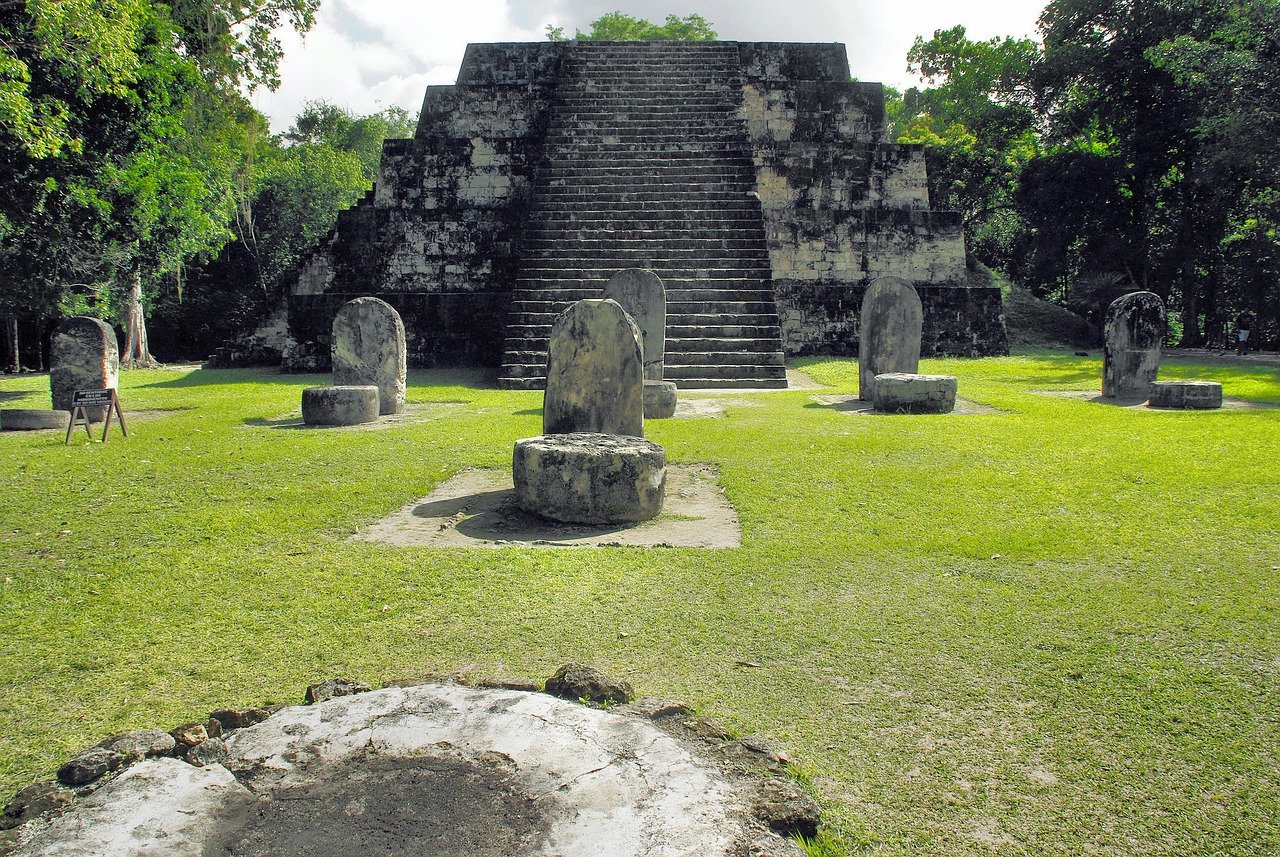The Influence of Sumerian Language on Civilization
The ancient Sumerian language stands as a cornerstone in the history of civilization, leaving an indelible mark on the development of early societies. Through its intricate web of influence, the Sumerian language shaped the very fabric of human interaction, from the way we communicate to the way we trade and exchange ideas.
At the heart of Mesopotamia, the cradle of civilization, the origins of the Sumerian language can be traced back to a time when writing was a revolutionary concept. As one of the earliest written languages, Sumerian paved the way for the recording of historical events, the sharing of stories, and the preservation of cultural heritage.
The cuneiform script, a hallmark of Sumerian civilization, transformed communication by evolving from simple pictograms to complex symbols. This evolution not only facilitated literacy but also revolutionized administrative practices, laying the groundwork for organized societies to thrive.
Delving into the realm of literature and mythology, Sumerian texts offer a glimpse into a world teeming with epic tales, mythical beings, and divine interventions. The Epic of Gilgamesh, a magnum opus of Sumerian literature, transcends time and space to captivate audiences with its universal themes and enduring characters.
As trade routes crisscrossed ancient Mesopotamia, the Sumerian language acted as a bridge connecting diverse cultures and fostering exchange. Through language diffusion, ideas spread, innovations flourished, and civilizations flourished in a melting pot of shared knowledge and experiences.
The legacy of the Sumerian language echoes through the annals of history, leaving an indelible imprint on subsequent civilizations and languages. Its influence reverberates in cultural practices, linguistic nuances, and societal structures, underscoring the profound impact of language on the tapestry of human existence.

Origins of Sumerian Language
Exploring how the ancient Sumerian language impacted the development of early civilizations, from writing systems and literature to trade and cultural exchange.
The origins of the Sumerian language can be traced back to ancient Mesopotamia, where it emerged as one of the earliest known languages in human history. This ancient language flourished in the region known as Sumer, located in present-day southern Iraq. Sumerian is considered a language isolate, meaning it does not belong to any known language family, making it a unique linguistic entity with no direct relatives.
The Sumerian language's complex grammar and rich vocabulary reflect the sophistication of the early Sumerian civilization. Scholars believe that the Sumerians developed their language to express intricate concepts related to governance, religion, and daily life, laying the foundation for future linguistic developments in the region.
Despite the passage of millennia, the legacy of the Sumerian language endures as a testament to the intellectual achievements of ancient Mesopotamian societies. Its influence can be seen in various aspects of human culture, from literature and mythology to trade and diplomacy.
Examining the cuneiform script and its role in recording the Sumerian language, contributing to the preservation of historical records and communication in ancient societies.
Discussing the evolution of cuneiform writing from pictograms to abstract symbols, highlighting its impact on literacy and administrative practices in Sumerian civilization.
Exploring the rich literary tradition of Sumerian texts, including myths, epics, and hymns, and their influence on later Mesopotamian cultures and religious beliefs.
Analyzing the significance of the Epic of Gilgamesh as a cornerstone of world literature, showcasing its themes, characters, and enduring legacy in global storytelling.
Investigating how the Sumerian language facilitated trade networks and cultural interactions across ancient Mesopotamia, shaping the development of interconnected societies.
Explaining the spread of the Sumerian language through trade routes and diplomatic relations, illustrating its role in fostering cross-cultural exchanges and knowledge transfer.
Reflecting on the lasting impact of the Sumerian language on subsequent civilizations, languages, and cultural practices, underscoring its enduring influence on human history.
Q: What is the significance of the Sumerian language in the history of civilization?
A: The Sumerian language played a crucial role in the development of early civilizations by providing a foundation for written communication, administrative systems, and cultural exchange.
Q: How did the Sumerian writing system contribute to the preservation of historical records?
A: The cuneiform script allowed the Sumerians to record important events, laws, and religious beliefs on clay tablets, ensuring that valuable information was passed down through generations.
Q: What impact did Sumerian literature have on later cultures?
A: Sumerian literary works, such as the Epic of Gilgamesh, influenced the storytelling traditions of ancient Mesopotamia and beyond, shaping the narratives and themes found in later literary works.

Sumerian Writing System
The Sumerian writing system, known as cuneiform, played a pivotal role in the recording and communication of the Sumerian language. Developed in ancient Mesopotamia, cuneiform script consisted of wedge-shaped characters impressed on clay tablets using a reed stylus. This intricate writing system allowed scribes to document a wide range of information, from administrative records and legal documents to literary works and religious texts.
One of the distinctive features of the Sumerian writing system was its evolution from pictographic representations to abstract symbols. Initially, cuneiform signs were based on real-world objects and concepts, gradually transforming into more stylized characters over time. This shift towards abstract symbols not only enhanced the efficiency of writing but also expanded the scope of expression in Sumerian literature and communication.
The complexity of cuneiform writing required extensive training and skill, leading to the emergence of a specialized class of scribes responsible for maintaining official records and transmitting knowledge across generations. These scribes played a crucial role in preserving the cultural heritage of Sumerian society through the meticulous transcription of texts onto durable clay tablets.
Furthermore, the adaptability of the cuneiform script enabled its widespread adoption beyond Sumer, influencing neighboring civilizations such as Akkad, Assyria, and Babylonia. This dissemination of the Sumerian writing system facilitated cross-cultural interactions and the exchange of ideas, contributing to the flourishing intellectual and commercial activities in the ancient Near East.

Evolution of Cuneiform
When delving into the fascinating world of the , one cannot help but marvel at the intricate journey this ancient writing system has undergone. Originating as simple pictograms etched into clay tablets, cuneiform evolved into a sophisticated script that revolutionized communication in the ancient Sumerian civilization.
The evolution of cuneiform can be likened to a delicate dance between art and practicality. Initially, these pictorial representations served as rudimentary symbols for objects and concepts, gradually transforming into abstract characters that conveyed complex ideas and sounds. This shift marked a pivotal moment in history, as it paved the way for enhanced literacy and administrative efficiency within Sumerian society.
Imagine the awe-inspiring moment when a Sumerian scribe first conceptualized the transition from depicting a physical object to symbolizing a broader concept. This shift in thinking not only expanded the scope of cuneiform but also laid the foundation for future writing systems to evolve and flourish.
As cuneiform continued to develop, it became intricately intertwined with various aspects of Sumerian life, from recording economic transactions to preserving mythological tales. The versatility of this script allowed for the expression of diverse narratives and ideas, shaping the cultural landscape of Mesopotamia.
The gradual evolution of cuneiform reflects the resilience and adaptability of human ingenuity. From its humble beginnings as pictograms etched in clay to its sophisticated form as a comprehensive writing system, cuneiform stands as a testament to the enduring legacy of the Sumerian civilization.

Literature and Mythology
Delving into the realm of Sumerian literature and mythology unveils a treasure trove of ancient wisdom and storytelling prowess that has left an indelible mark on human culture. The Sumerians were not only pioneers in developing written language but also masterful storytellers who crafted epic tales and myths that resonate across millennia. These literary works offer a glimpse into the beliefs, values, and societal norms of this ancient civilization, providing valuable insights into the human experience.
One of the most renowned literary works to emerge from Sumerian culture is the Epic of Gilgamesh, a monumental epic poem that predates the Homeric epics by centuries. This epic narrative follows the adventures of Gilgamesh, a legendary king of Uruk, as he embarks on a quest for immortality and grapples with existential themes such as mortality, friendship, and the nature of divinity. The Epic of Gilgamesh stands as a testament to the enduring power of storytelling to capture the essence of the human condition.
Furthermore, Sumerian mythology is replete with a pantheon of gods and goddesses, each with their own domains of influence and intricate relationships with mortals. These divine beings populate the Sumerian cosmology, shaping the beliefs and rituals of the ancient society. The myths and religious texts of the Sumerians provide a window into their worldview, offering explanations for natural phenomena, human origins, and the mysteries of the universe.
Through their literary and mythological heritage, the Sumerians not only entertained and educated their own society but also laid the foundation for future generations of storytellers and mythmakers. The enduring legacy of Sumerian literature and mythology can be seen in the echoes of their tales in later Mesopotamian cultures, as well as in the broader tapestry of world literature and religious traditions. The intricate tapestry of Sumerian storytelling continues to captivate and inspire audiences worldwide, proving that the power of a well-told story transcends time and space.

Epic of Gilgamesh
The stands as a monumental piece of ancient literature, offering a glimpse into the rich storytelling tradition of the Sumerian culture. This epic poem, dating back to the third millennium BCE, follows the adventures of Gilgamesh, the legendary king of Uruk, and his companion Enkidu. Through a series of trials and tribulations, the epic delves into themes of friendship, mortality, and the quest for immortality.
One of the remarkable aspects of the Epic of Gilgamesh is its universal themes that transcend time and culture. The story of Gilgamesh's search for eternal life resonates with audiences across centuries, serving as a reflection of human desires and fears. The character development of Gilgamesh, from a tyrannical ruler to a wise leader, offers valuable insights into the complexities of human nature and the pursuit of wisdom.
Moreover, the Epic of Gilgamesh provides a window into the religious beliefs and mythological worldview of ancient Mesopotamia. The encounters with gods and supernatural beings in the epic highlight the spiritual dimension of Sumerian society, emphasizing the interconnectedness between the mortal and divine realms.
As a foundational work of world literature, the Epic of Gilgamesh has influenced numerous literary works and cultural expressions throughout history. Its themes of heroism, friendship, and the inevitability of death have left a lasting imprint on storytelling traditions worldwide, inspiring writers, poets, and artists across generations.

Trade and Cultural Exchange
Trade and cultural exchange were integral components of the ancient Mesopotamian world, facilitated by the widespread use of the Sumerian language. The Sumerians were pioneers in establishing trade networks that connected distant regions, allowing for the exchange of goods, ideas, and technologies. Through bustling marketplaces and caravan routes, merchants and traders navigated the linguistic landscape using Sumerian as a common medium of communication.
Furthermore, the cultural exchange enabled by the Sumerian language transcended mere commercial transactions. It served as a conduit for the dissemination of art, architecture, religious beliefs, and social customs among diverse communities. The language acted as a bridge that facilitated interactions between people of different backgrounds, fostering a sense of shared identity and mutual understanding.
In addition to tangible goods, the exchange of knowledge and intellectual pursuits played a crucial role in the development of early civilizations. Scholars and scribes from various city-states engaged in scholarly discourse, sharing insights on astronomy, mathematics, and literature. The Sumerian language, with its rich vocabulary and nuanced expressions, became the language of scholarship and intellectual inquiry, laying the foundation for future academic endeavors.
The vibrant tapestry of trade and cultural exchange woven through the Sumerian language not only enriched the material lives of ancient Mesopotamians but also contributed to the flourishing of artistic and intellectual endeavors. It fostered a climate of innovation and cross-pollination, where ideas could germinate and flourish in the fertile soil of cultural diversity.

Language Diffusion
Language diffusion refers to the spread of the Sumerian language beyond the borders of Mesopotamia, influencing neighboring regions and cultures through trade networks and diplomatic relations. As merchants traversed ancient trade routes, they carried not only goods but also the linguistic legacy of Sumerian civilization. This linguistic exchange acted as a catalyst for cross-cultural interactions, fostering a climate of knowledge transfer and mutual understanding.
Through the establishment of commercial connections and diplomatic ties, the Sumerian language served as a medium for communication and negotiation between diverse societies. As a result, linguistic elements of Sumerian found their way into the vocabulary and writing systems of other civilizations, leaving a lasting imprint on the linguistic landscape of the ancient world. The diffusion of the Sumerian language played a crucial role in shaping the linguistic diversity and cultural amalgamation of the broader Mesopotamian region.

Legacy of Sumerian Language
When we delve into the annals of history, one cannot ignore the profound impact of the Sumerian language on the tapestry of civilization. The legacy left behind by this ancient language reverberates through the corridors of time, shaping the course of human development in ways unimaginable. From the dusty scrolls of Mesopotamia to the bustling markets of ancient cities, the Sumerian language served as a bridge connecting disparate cultures and paving the way for the exchange of ideas and goods.
As the cradle of civilization, Mesopotamia bore witness to the birth of written language, with the Sumerians at the helm of this monumental achievement. Their intricate cuneiform script not only preserved the spoken word but also laid the foundation for administrative record-keeping and literary endeavors. The evolution of cuneiform from simple pictograms to complex symbols mirrored the growth of Sumerian society, ushering in an era of intellectual flourishing and cultural exchange.
One cannot speak of the legacy of the Sumerian language without delving into its rich literary tradition. The epic tales of heroes and gods, engraved in clay tablets, captivated the hearts and minds of generations to come. The Epic of Gilgamesh stands as a testament to the enduring power of storytelling, transcending time and space to resonate with audiences across the globe.
Trade routes crisscrossed the ancient world, carrying not only goods and commodities but also the linguistic heritage of the Sumerians. Through diplomatic relations and commercial exchanges, the Sumerian language spread far and wide, leaving an indelible mark on the languages and cultures it encountered. The echoes of Sumerian influence can still be heard in the languages spoken today, a testament to the enduring legacy of this ancient tongue.
As we reflect on the legacy of the Sumerian language, we are reminded of the interconnectedness of human history and the enduring impact of our linguistic heritage. The Sumerians may have faded into the mists of time, but their language lives on in the words we speak and the stories we tell. Let us cherish this legacy and continue to unravel the mysteries of the past, one cuneiform tablet at a time.
Frequently Asked Questions
- What is the significance of the Sumerian language in history?
The Sumerian language holds immense significance in history as one of the earliest known written languages, playing a crucial role in the development of civilization. Its impact can be seen in various aspects such as literature, trade, and cultural exchange.
- How did the Sumerian writing system contribute to the preservation of historical records?
The cuneiform script, used for writing Sumerian, played a vital role in recording historical events and communication in ancient societies. Its evolution from pictograms to abstract symbols revolutionized literacy and administrative practices in Sumerian civilization.
- What is the significance of the Epic of Gilgamesh?
The Epic of Gilgamesh is a cornerstone of world literature, showcasing themes and characters that have had a lasting impact on global storytelling. It reflects the rich literary tradition of Sumerian texts and their influence on later cultures and religious beliefs.
- How did the Sumerian language facilitate trade and cultural exchange?
The Sumerian language acted as a key facilitator of trade networks and cultural interactions across ancient Mesopotamia. Its diffusion through trade routes and diplomatic relations fostered cross-cultural exchanges and knowledge transfer.
- What is the legacy of the Sumerian language on subsequent civilizations?
The legacy of the Sumerian language extends to subsequent civilizations, languages, and cultural practices, leaving a lasting impact on human history. Its influence can be traced in various aspects of society and communication even today.



















